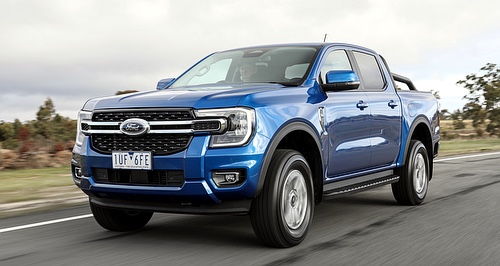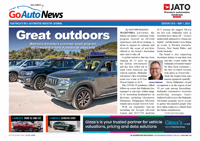Make / Model Search
News - VFACTS - Sales 2022VFACTS: Strong September salesHONED RANGER: Ford’s latest light commercial offering is closing the gap on Toyota, now just 300 units shy of the best-selling HiLux.
Market totals up 12.3 per cent over September 2021 with 93,555 new vehicles sold5 Oct 2022 By MATT BROGAN FCAI figures released this week show new vehicle sales for September are up 12.3 per cent over the same month last year with 93,555 vehicles sold. The number brings the year-to-date tally to 811,130 units, giving hope that the Australian new car market will again break the one-million-unit barrier in 2022.
There were 24.6 selling days in September 2022 compared to 25.6 in September 2021, resulting in an increase of 548.7 units per day.
According to Federal Chamber of Automotive Industries chief executive Tony Weber, supplies of new cars into the Australian market are showing signs of improvement. However, Mr Weber cautioned that logistical and supply chain issues remained problematic as the global automotive market recovers from the COVID-19 pandemic.
For September, Toyota again topped the local sales charts with a total of 14,852 vehicles sold, more than double that of second place Kia’s 7290 unit sales. Mazda ranked third in the month of September with 7259 unit sales ahead of Mitsubishi (6784) and Ford (6635).
The passenger vehicle market was again down in September (-5.6% or 1041 units) while sales of SUV (+21.6% or 8811 units) and light commercial vehicles (+11.1% or 2217 units) continue to grow.
Unsurprisingly, the Toyota HiLux was Australia’s best-selling new car once again with 5170 registrations recorded for the month of September. Ford’s new-generation Ranger is fast catching the Toyota ute, however, with 4890 unit sales chalked up for the month that was.
In a surprise twist, and mirroring a similar trend in New Zealand, the Tesla Model Y proved hard to beat. The electric SUV tallied 4359 unit sales across September, leading the Mazda CX-5 (2439) and Mitsubishi Triton (2319).
According to Mr Weber, the number of battery electric vehicles sold locally in September signalled that a growing number of Australians were committed to decarbonising their transport choices.
“During September, 7247 battery electric vehicles were sold, more than hybrid and plug-in hybrid vehicles combined. Year-to-date 21,771 battery electric vehicles have been sold,” he said.
“While the overall market share of battery electric vehicles remains low (at 2.7%), there is a clear market trend towards zero emission technology.”
Mr Weber said the release of these figures follows the federal government’s call for submissions in its recent National Electric Vehicle Strategy Consultation Paper.
“Car-makers are encouraged by the release of this discussion paper. Australia’s pathway to decarbonising light transport is complex and required a holistic policy framework,” he said.
“This paper addresses many of the issues that will need to be resolved. Any future policy and regulation need to be developed within the context of vehicle price, model availability, and battery supply; and supported through the rollout of charging infrastructure and consumer incentives.
“The policy objective is to lower emissions, and we look forward to offering practical guidance to the government of how to navigate this pathway.”
Additionally, Mr Weber’s September VFACTS report noted country of origin figures showing China had risen to become the third largest supplier of vehicles to the Australian market with 14,889 units across the past month. Japan (23,880) and Thailand (20,363) remain Australia’s largest new-vehicle suppliers.
Across the states and territories, we find the ACT making the biggest move forward in September with new vehicle sales up 67.7 per cent to 1498 units. Sales were also up in NSW (+20.8% to 28,945 units), Victoria (+23.8% to 25,367 units) and Queensland (+2.9% to 20,634 units).
All remaining states and territories recorded a decline in sales with the Northern Territory falling 9.8 per cent to 832 units, South Australia dropping 2.2 per cent to 6005 units, Tasmania down 0.9 per cent to 1630 units, and Western Australia slipping 6.0 per cent to 8644 units.
Heavy commercial vehicle sales were up 6.5 per cent in September over the same time last year with 256 units sold nationally.
Top 10 vehicle sales by make (September 2022):
Top 10 vehicle sales by model (September 2022):
State by state (September 2022):
 Read more27th of September 2022  Thailand’s EV push could yield electric utesFCAI electric ute prediction contrary to Thailand’s plan to become EV production hub5th of September 2022  VFACTS: August sales best since 2017Highest August sales since 2017 with more than 95,000 deliveries, record BEV volume |
Click to shareVFACTS articlesResearch VFACTS Motor industry news |











Facebook Twitter Instagram